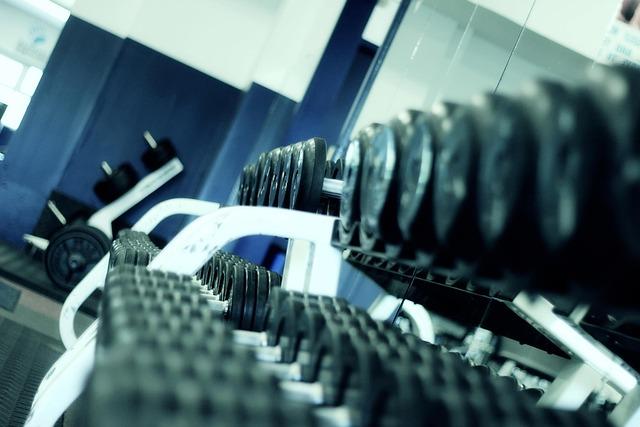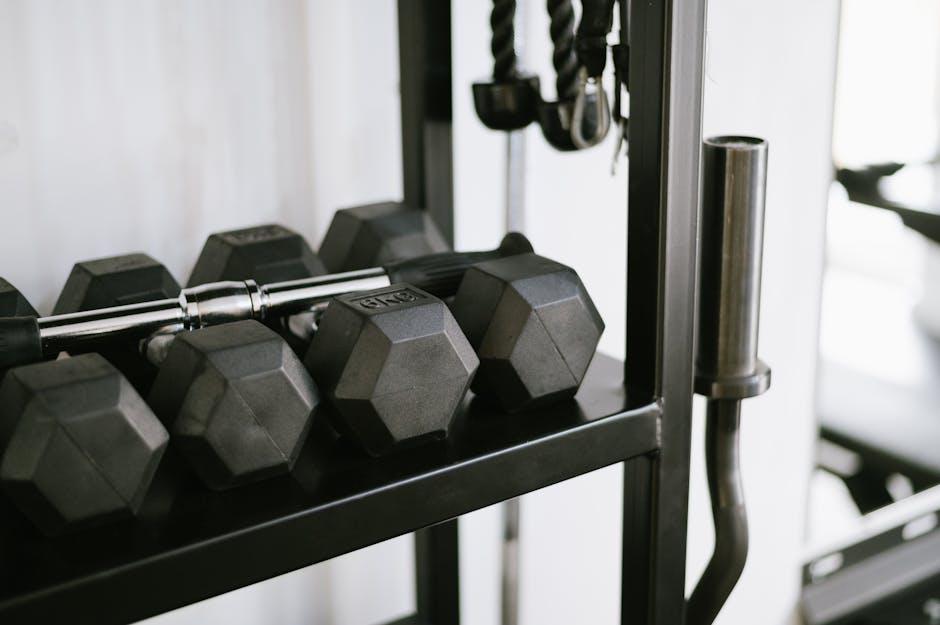In the pursuit of strength and fitness, lifting weights is akin to sculpting a masterpiece; each rep is a chisel stroke, each set a step closer to unveiling the best version of yourself. Yet, like any art form, it demands precision, respect, and care. In the iron jungle of the gym, the thrill of progress can sometimes overshadow the quiet, essential wisdom of injury prevention. This article delves into the nuanced dance between ambition and caution, offering insights and strategies to help you lift smarter, safer, and with enduring success. Whether you’re a seasoned lifter or a newcomer to the world of weights, understanding how to protect your body while you build it is the cornerstone of a sustainable fitness journey. Join us as we explore the principles and practices that ensure every lift is not just a step forward in strength, but a stride towards lifelong vitality.
Mastering the Art of Warm-Up: Essential Techniques for Injury Prevention
When preparing for a weightlifting session, a well-structured warm-up routine is not just beneficial; it’s essential. Proper warm-up techniques can significantly reduce the risk of injury and enhance performance. Begin with dynamic stretching to increase blood flow and prepare your muscles for the intense work ahead. Incorporate exercises like arm circles, leg swings, and torso twists to ensure every part of your body is engaged.
Follow up with a series of specific mobility drills targeting the joints and muscles that will be heavily utilized. These drills should be tailored to your workout, focusing on areas like the shoulders, hips, and ankles. Consider the following strategies to elevate your warm-up routine:
- Foam Rolling: Use a foam roller to release tension and improve flexibility in tight muscles.
- Light Cardio: Engage in a brief session of light cardio, such as brisk walking or cycling, to elevate your heart rate.
- Activation Exercises: Perform exercises that activate key muscle groups, such as glute bridges or scapular push-ups.

Perfecting Your Form: Key Posture Tips for Safe Lifting
Maintaining proper posture is crucial to prevent injuries and enhance your lifting performance. Align your spine by keeping your back straight and chest lifted. This alignment not only protects your spine but also helps in distributing the weight evenly across your body. Engage your core muscles to provide additional support and stability. This engagement acts as a natural brace, safeguarding your lower back from undue stress.
Remember to keep your feet shoulder-width apart to establish a solid base. This stance aids in maintaining balance and control during lifts. As you lift, ensure that your knees are slightly bent, not locked, to absorb any excess force and reduce strain on your joints. Additionally, avoid twisting or jerking movements; instead, use a slow and controlled motion to minimize the risk of muscle tears or sprains. By incorporating these posture tips into your routine, you’ll set the foundation for a safer and more effective lifting experience.

Choosing the Right Gear: Equipment Essentials for Injury-Free Workouts
When it comes to lifting weights, having the right gear can make all the difference in maintaining form and preventing injuries. Consider these equipment essentials:
- Weightlifting Shoes: A solid pair of weightlifting shoes provides stability and a firm base. Look for shoes with a flat, non-compressible sole to enhance balance and prevent ankle injuries.
- Wrist Wraps: Ideal for exercises that require wrist support, such as bench presses and overhead lifts. They help maintain proper alignment and reduce the risk of strain.
- Lifting Belt: While not necessary for every lift, a good belt can support your lower back during heavy squats and deadlifts, promoting proper posture and core engagement.
- Knee Sleeves: These can provide extra support and warmth to your knee joints, helping to reduce the risk of injury during squats and lunges.
Investing in quality gear tailored to your specific needs not only enhances your performance but also ensures a safer lifting experience. Choose wisely and lift confidently!

Listening to Your Body: Recognizing Warning Signs to Avoid Overexertion
Understanding the subtle cues your body sends is crucial in preventing injuries during weightlifting. Often, the line between a productive workout and overexertion is blurred by the adrenaline rush and the determination to achieve more. However, learning to listen to your body can be the key to longevity in your fitness journey. Pay attention to signs such as persistent fatigue, unusual joint pain, or a nagging sense of discomfort. These could be indicators that your muscles and joints are overstressed and in need of rest.
Here are some warning signs to be mindful of:
- Sharp or stabbing pain: Unlike muscle soreness, this type of pain should not be ignored.
- Swelling or inflammation: Visible changes in your body could indicate injury.
- Dizziness or nausea: A sign that your body might be pushed beyond its limits.
- Reduced performance: Consistently lifting less than your usual capacity can signal overtraining.
Recognizing these signs early and responding with adequate rest, hydration, and nutrition will not only prevent injuries but also enhance your overall strength and performance. By being attuned to your body’s needs, you create a sustainable path towards achieving your fitness goals.
The Way Forward
As you embark on your weightlifting journey, remember that safety is your steadfast companion. By embracing proper techniques, listening to your body, and incorporating thoughtful precautions, you can transform your workouts into empowering experiences free from the shadow of injury. Let each lift be a testament to your dedication, a step forward in your pursuit of strength and well-being. Stay informed, stay mindful, and let the weights you lift elevate not just your physical prowess, but your confidence and resilience as well. Here’s to a future where every rep is a celebration of your commitment to health and safety.
